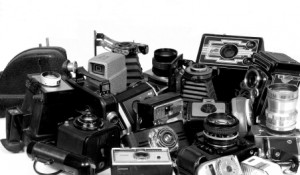ONE Tip to Make Better Photographs

On the long, long road to artistic enlightenment, one is beset on all sides by the temptations of fast advancement, of turn-key improvements that will catapult you, the artist, to new heights and new levels of quality. Sometimes these temptations are valid and justifiable and sometimes they’re not.
The most often encountered temptation on the road to artistic enlightenment in digital photography is equipment. Oh yes, all of that delicious tech, how we love it so. If you’ve been shooting national parks and you just can’t seem to capture that “Ansel Adams look” that you’re after, you might think, Hey, maybe $600 in high-end rectangular glass gradient filters is the key to my woes! And truthfully, it could be…
But probably not.
There is only one piece of advice I can give you that will help you to simultaneously improve your photographs and to save money on all of that equipment you keep drooling over in the B&H catalog…
Stop buying equipment.
I’m serious, actually stop buying equipment. How much equipment do you have? How much more do you think you need to make truly great photographs? I suppose it depends on what you’re photographing, but here is a list of essential equipment that everyone should have:
- A camera (duh?)
- One decent zoom lens somewhere in the range of 15-200mm (24-70, 24-105, 16-35, 70-200, etc.)
- A quality, sturdy tripod
- A reliable, well-made ball head
- A bag to carry stuff in (optional)
The bag doesn’t even have to be an actual camera bag; I’ve seen professionals–and I mean seasoned, no-holds-barred, money-is-no-object pros–carrying cameras around in fanny packs, hiking backpacks, you name it. Whatever works for you.
Any gear you buy after that is likely to be something you want. I’m not saying that’s wrong, either; I certainly love equipment and there is absolutely a time and a place for a 10-stop ND filter or that cool new hot shoe flash or that cutting edge lens that was just released, and so on.
So what is wrong with buying equipment, then? Buying equipment because you think you need it to get to the “next level” of your work is, generally speaking, untrue. Want some evidence? Here are hundreds of incredible photos taken with iPhones. It doesn’t really get a whole lot more low-tech than a 3-megapixel, fixed-focal-length cell phone camera… Which has horrendous low-light performance, I might add.
Can an iPhone create the kind of tack-sharp, wide-angle, color-rich images you’re trying to create? No, probably not. You need at least some level of decent equipment to get to where you want to be, but nine times out of ten you don’t have to go any further than the list at the top of this article.
So before you load up B&H’s awesome website to pick up the current focus of your technolust… Go out and take a few photos. Of anything. Because practice makes perfect and there is no substitute for real-world experience.
 Single-Serving Photo
Single-Serving Photo
Comments